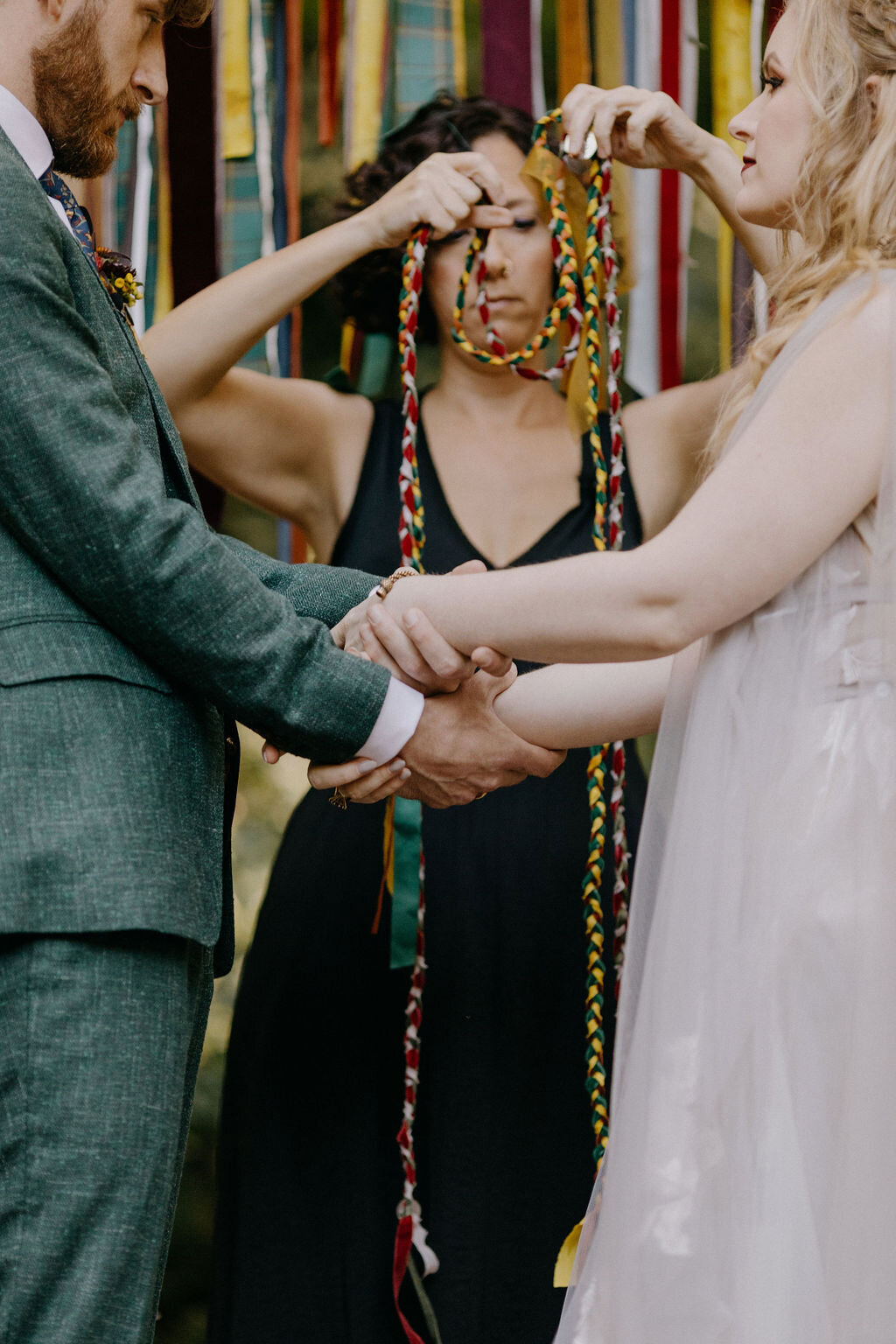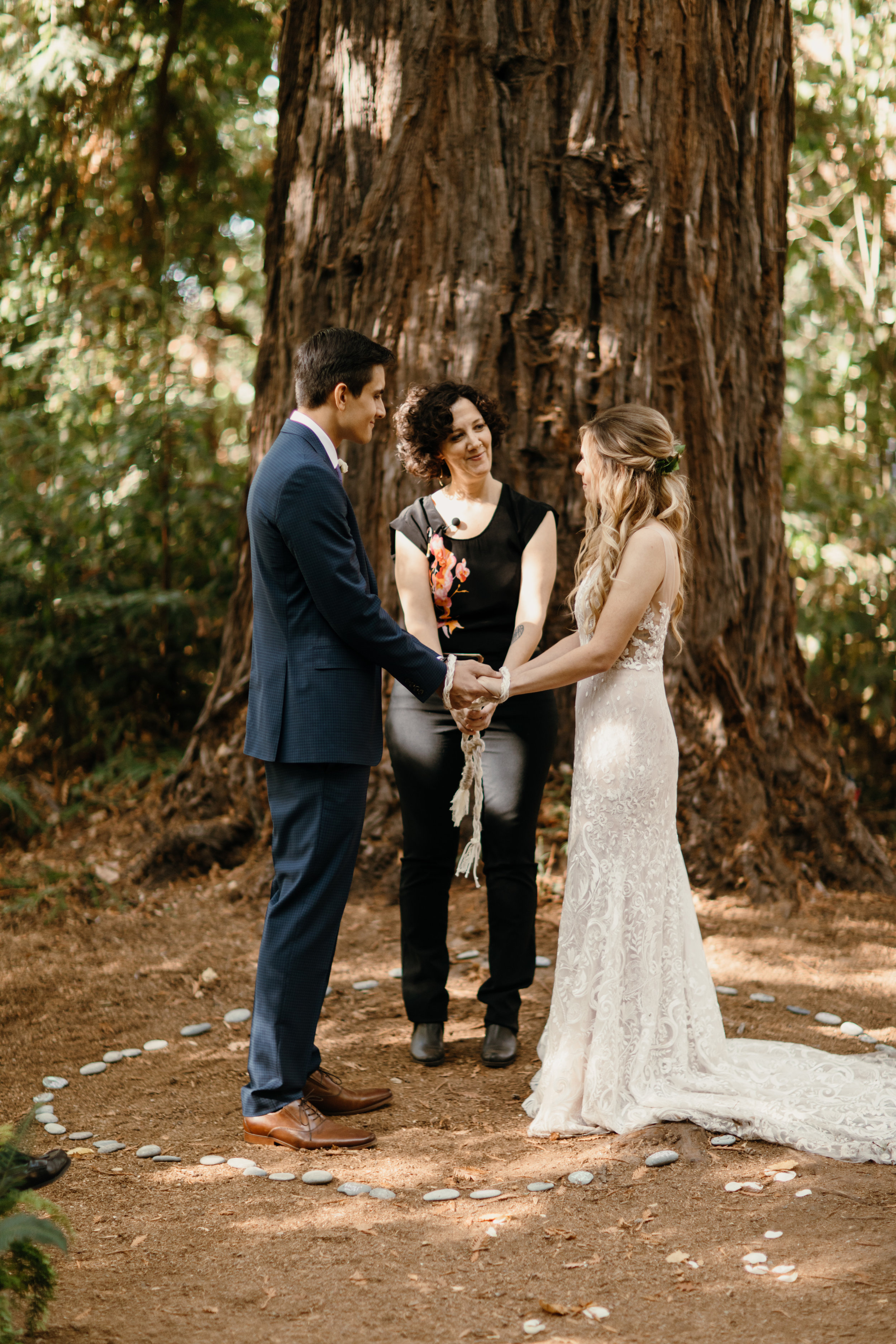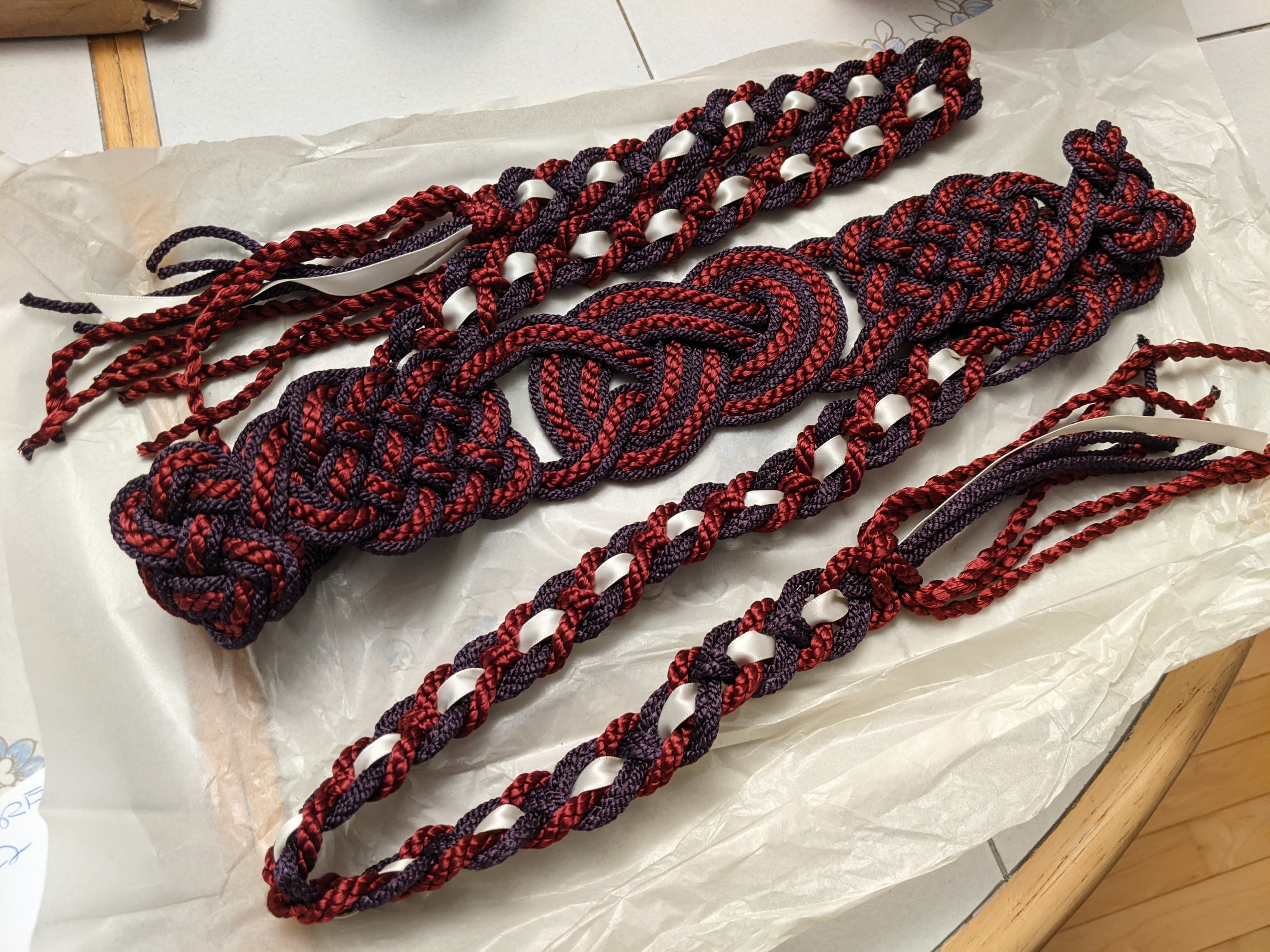Handfasting Rituals: Tying the Knot
Handfasting Rituals: Tying the Knot
Couples come in all shapes and sizes, and so do handfasting rituals. There is a significant amount of variance when it comes to the materials used to make handfasting cords, to the specific type of knot that’s tied, and to the motivations behind handfasting rituals.
Here are few vignettes about some of the handfasting ceremonies I’ve performed.
But first, a brief history of handfasting rituals..
Handfasting was practiced in several European countries including Germany and Scotland. Until the mid-1700’s few marriages were consecrated in a church. Rather they were celebrated by a simple hand-binding ceremony in which two lovers joined hands over the village anvil, in a field, or in a grove. In addition to uniting heterosexual couples, there is evidence that some version of this ceremony was performed, at different times and places in European history, for women who wished to become a family. Sources on handfasting rituals offer differing information about what a handfasting ritual symbolized (engagement, temporary commitment of a year and a day, or marriage), when and why the tradition became obsolete, and the different protocols for handfasting rituals in various European countries. Nowadays it is frequently included in wedding ceremonies as a modern, neo-pagan interpretation of a traditional marriage ceremony, and a symbolic binding of body and soul.
The Old Faith
This couple (below) wanted a beautiful, powerful and authentic ceremony that was rich in reflection and tradition. It was especially important to the bride to honor her Celtic heritage by including various cultural, material, symbolic, traditional and spiritual elements, including a ring warming, a hand fasting, and a Quaich. These ritual elements didn’t reflect her immediate family customs, and hadn’t been practiced within her lineage for at least two generations. Rather, they reanimated “the old faith,” as her grandfather used to call it. Their handfasting cord was made from deerskin leather lacing, silk and cotton velvet, and natural dyed silk ribbons in their wedding colors, and was braided by them.
PHOTO CREDIT: NIRAV PATEL
Same-sex couple who eloped to Carmel-By-The-Sea
Same sex couples are not currently permitted to get married in Northern Ireland. In the case of this wedding ceremony, the brides are wedding photographers who have shot both heterosexual and same-sex weddings. They admitted feeling devastated each time they heard the words "as set out by the law of this county marriage is the union of one man to one woman…” So they decided to elope to Carmel-By-The-Sea when it was their time to get married. As descendants of Ulster Scots, the brides chose to bind their hands in order to honor their beloved Celtic ancestry, and incorporate a tradition from home, even though they were on the other side of the world at the time of their ceremony. They commissioned a textile artist from Belfast to make their hand-binding cloth. It was made of Irish linen and had small squares embroidered on to each end to represent pixels — a reference to both a cheesy joke that one of them made when they first met, and to their shared profession as photographers.
Rope Bondage
This couple considers rope bondage (a form of BDSM) an important and deeply connective part of their erotic life. They wanted to be bound as part of their ceremony as a symbol of the intimate love they share. The deeper motivation behind their handfasting ritual was not publicly revealed during their ceremony, rather it was a discrete act of intimacy and private significance that was meaningful enough to them to include in their ceremony.
Eight Strands
The couple (below) has Celtic roots (as well as Indian, Mexican, German, Jewish, Catholic, Swiss.) We did various things during the wedding ceremony to incorporate the cultural and geographic richness of their family and community, but they also wanted to include the ancient Celtic custom of handfasting to honor the Celtic part of their ancestry. More than that, they chose this ritual because they wanted a tangible representation of their lives being strongly tied together, a symbol of an inextricable bond, with the understanding that their marriage vows - like the knot itself - are not something to be undone lightly. The bride wove this cord out of eight strands - one for each year that she and her now husband had been together as a couple.
PHOTO CREDIT: LEVI TIJERINA
Entropy Meets Conscious Choice
I asked another one of my brides why she wanted to do a handfasting as part of her wedding ceremony… Here is what she said: “I believe in the sad yet natural force of entropy, mountains eroding, people scattering across cities and continents, dust gathering on our trinkets and our memories. The big bang forces all the stars further and further apart every second, after all. But I personally believe that the act of handfasting, making the knot, represents making a choice — a conscious decision to anchor yourselves together, like an act of defiance against cruel nature. I believe it is a commitment to each other's souls, that they will not be scattered apart so easily.” I love this so, so much! This couple had a handfasting cord made in their wedding colors (below.)


